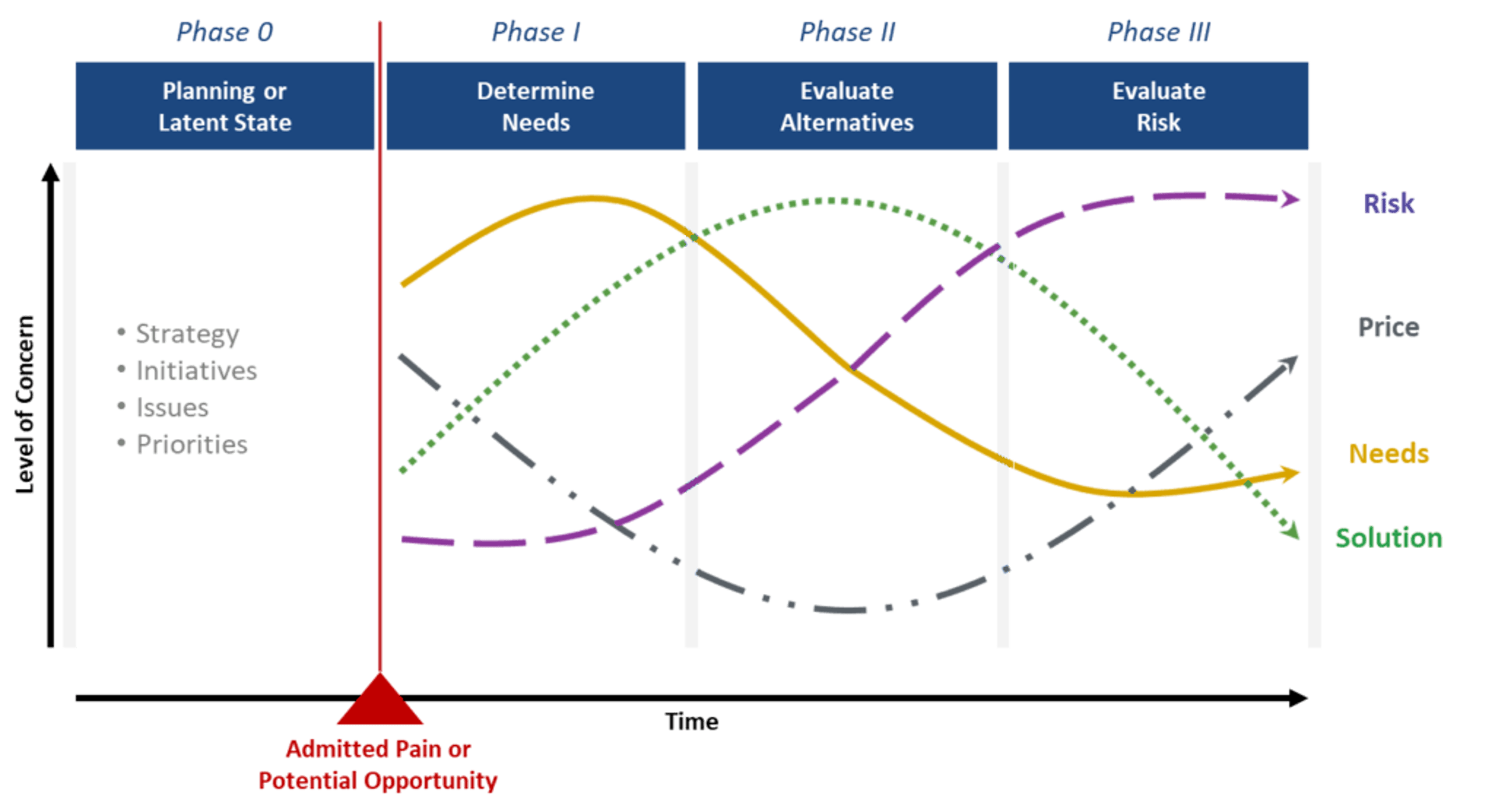How To Prepare For Sales Meetings Or Calls: The Alignment Method
Improving win rate

For several weeks, you’ve been trying to arrange a meeting with a senior-level manager in one of your prospect accounts, and finally, after a concerted business development effort, your persistence has paid off. You have managed to schedule an appointment for a conversation next week. This will be the first time you will speak at length with this prospect, and it is critical that the call goes well. Otherwise, the chances of securing a new customer and producing business results will evaporate. What do you do now?
The obvious answer is: prepare for the call. However, only 26 percent of salespeople are conducting disciplined planning for sales calls or meetings, according to a survey by CSO Insights. They are not using information sources or data analysis tools to understand the person they will be meeting and the organization for which that person is employed.
Amazingly, the default behavior for most sellers is to gather information about the products or services they wish to sell, and practice their sales pitch, if they practice anything at all. Not surprisingly, research shows an alarmingly low rate of first-call success – buyers report that the majority of meetings with sales professionals (58 percent) did not provide any value.
How Should Salespeople Who Want to Succeed Prepare for Calls and Meetings with Buyers?
The secret to an effective sales call or meeting is alignment: understanding where your buyer is in their journey in evaluating and selecting a potential solution, and then preparing accordingly.
A sales call with an early stage buyer – one who has not yet decided to buy anything, because they are unaware of any problem or opportunity that may motivate them to do so, or who is aware but does not yet believe it warrants action – requires a different approach from a late-stage buyer who has a clear vision in their mind about what they intend to purchase. Unfortunately, most salespeople tend to treat all prospects generally the same way, regardless of where a buyer may be in their purchase decision process. This often leads to significant misalignment, which leaves the buyer with the feeling that they are not in sync with that seller, or even worse, that the seller is simply not listening.
What are the Four Stages of the Buyer's Journey?
In our book, The Collaborative Sale, Keith Eades and I described a simple model of buyer psychology that illustrates their concerns as they progress through a buying journey (see illustration). As the model shows, buyers migrate generally through four phases in their purchase process.
- They begin in a latent state, but then recognize a potential problem or missed opportunity if they do not take action.
- They then focus on determining their needs or requirements, although they are also somewhat concerned about the potential cost of a solution, too. Buyers do not want to spend more than the value they may realize from a potential solution.
- They then evaluate different approaches and solutions, comparing needs and requirements against various alternatives.
- After they identify a potential solution, buyers then are most concerned about the potential risk of making the buying decision. Here, price once again becomes an important concern as well.

Salespeople can interact with buyers at any phase in this model. They may connect with a prospect very early, stimulate their interest and curiosity, and initiate a new purchase process. However, most buyers do not engage with salespeople until the end of Phase II or in Phase III, as they can conduct much of the required research and evaluation on their own, without a salesperson’s help. When buyers do engage with sales professionals, however, they expect sellers to collaborate and provide value by enhancing or improving their vision of a solution.
So, the first question that any seller should ask themselves before a sales meeting or call is: where is this buyer in their journey? This, more than any other factor, will determine the most appropriate goals for the call, and inform sellers in how they must prepare.
Phase 0 and Phase I buyers – If the buyer is in an early stage, then the seller should research that buyer’s position and background, using sources such as LinkedIn, ZoomInfo and DiscoverOrg, and then seek to understand that buyer’s organization and challenges. Often, much of this information can be collected in an initial discovery call, before the meeting. Nevertheless, it pays to research the potential reasons or causes for the issues that the buyer needs to address. Sellers should develop insights from their research and prepare a provocative point of view, in case the buyer needs to be encouraged to look into options other than the status quo. Sellers should be prepared to talk about relative solution cost and value, using relevant customer success stories as illustrations.
Phase II buyers – All of the previous recommendations on research apply as well to engaging with mid-stage buyers. In this phase, the buyer will be evaluating and comparing alternatives, and they are likely to have started to develop an idea of a possible solution in their mind. Sellers need to be ready to highlight the differentiators of their solutions, and how they could provide value to that buyer.
Increasingly, especially in business-to-business sales, buyers are increasing the number of people involved in the buying journey. According to research by Gartner, the number and diversity of people involved in B2B buying decisions continue to increase. Therefore, it is important for sellers to research and identify all the key players in the account, and how they relate to each other. This is good to know with early-stage buyers, of course, but it becomes absolutely critical for selling successfully to mid-stage buyers in the midst of evaluating alternatives. Consensus building is rapidly becoming a critical skill for sales professionals.
Phase III buyers – If a buyer simply asks for a price quotation or a quick proposal, they are clearly a late stage in their buying journey. This is dangerous ground for salespeople, as it is likely that the buyer has already decided to purchase a competitive alternative. Sellers should be prepared to offer alternative approaches that provide additional value, beyond the capabilities of the buyer’s solution vision. This kind of “re-engineering” discussion is the most challenging type of sales conversation, but sellers can still win if they address the buyer’s chief concern in this final phase of their decision process: risk.
The Three Forms of Risk that Sellers Need to Address
There are three forms of risk that buyers worry about when buying anything:
- Operational risk – Will the solution actually work as described? Will it address our needs?
- Financial risk – Are we paying the right price? Is there sufficient value in this solution to make a decision to buy?
- Transitional risk – How can we install or implement this solution successfully? What changes will we need to make in our organization to ensure it will work successfully?
Sellers who are interacting with late-stage buyers must be prepared to offer additional or alternative capabilities that add value to the buyer’s vision of a solution, and most importantly, they must also be prepared to recommend actions that will mitigate the buyer’s perception of risk and guide them to a confident buying decision.
Hubspot determined that buyers and sellers are usually out of alignment on the topics that they want to discuss in a sales meeting or call. By understanding the psychology of the buyer, sellers can anticipate the issues that the buyer will want to discuss, and how the seller can address those concerns in a way that will differentiate them from alternatives, thus putting them in the best position to win.

Brochure: CRM-enabled Workflow Tools
Learn how our CRM tools integrate best practices into your team's workflow.
DownloadGet industry insights and stay up to date, subscribe to our newsletter.
Joining our community gives you access to weekly thought leadership to help guide your planning for a training initiative, inform your sales strategy, and most importantly, improve your team's performance.






